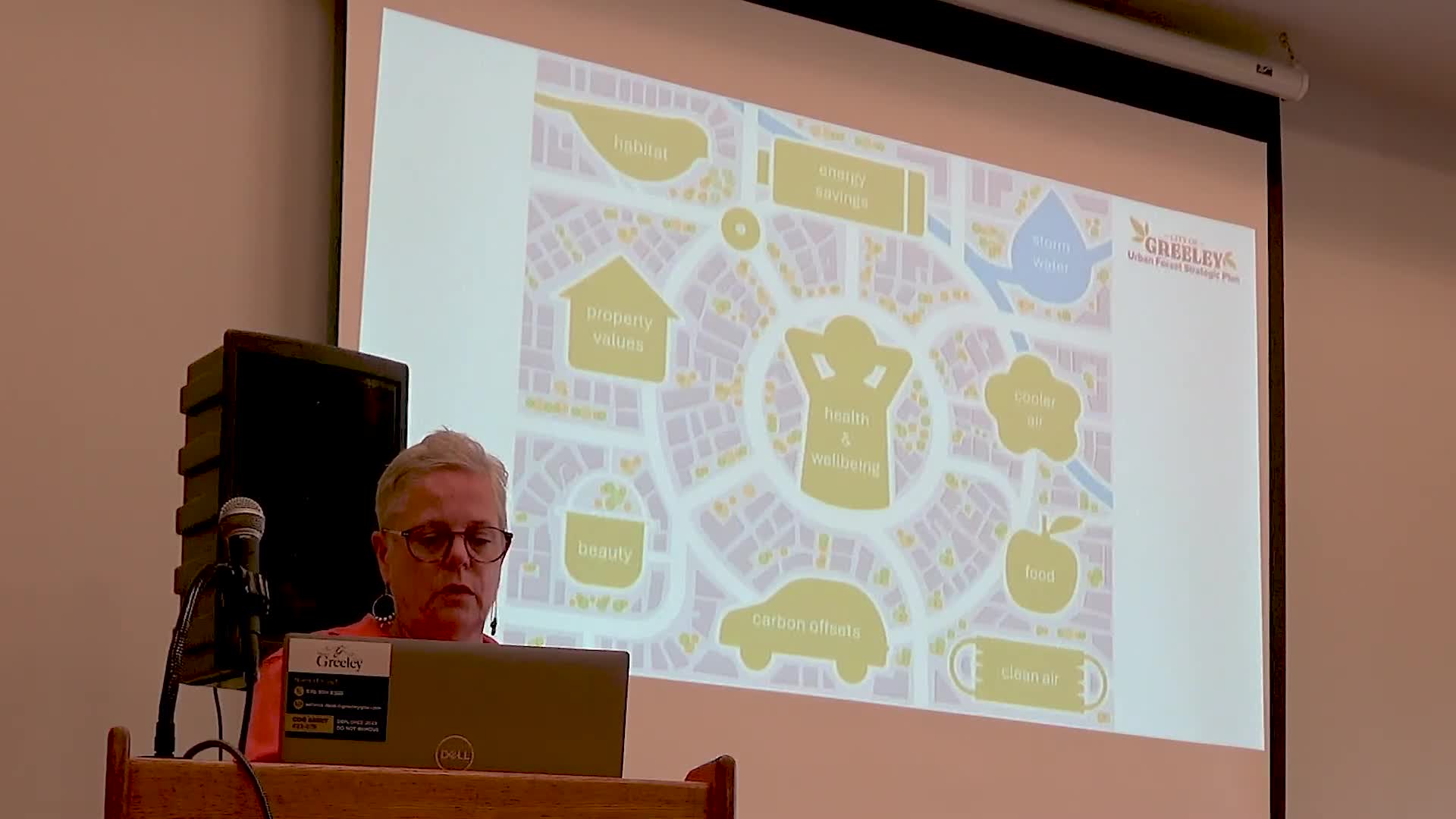
This article was created by AI using a video recording of the meeting. It summarizes the key points discussed, but for full details and context, please refer to the video of the full meeting. Link to Full Meeting
A key point raised was the staggering cost of replacing the city’s trees, estimated at nearly $40 million. This figure underscores the importance of maintaining the existing tree population, which not only beautifies the community but also supports local wildlife and enhances property values. The workshop also touched on the health benefits associated with green spaces, noting that individuals who engage with nature tend to have better overall health.
Concerns were raised about the Emerald Ash Borer (EAB), an invasive insect threatening ash trees in the region. While EAB has not yet been found in Greeley, it has been detected in nearby cities. Residents were encouraged to monitor their ash trees for signs of infestation, such as small D-shaped holes, and to consider treatment options available through the city’s program.
The meeting concluded with a call to action for residents to take proactive steps in caring for their trees, reinforcing the message that healthy trees are vital to the community's environmental and aesthetic landscape. As Greeley moves forward, the city aims to strengthen its commitment to urban forestry, ensuring that the benefits of trees continue to enrich the lives of its residents.
Converted from HOA Workshop 2025: Greeley Codes meeting on July 03, 2025
Link to Full Meeting
Comments
View full meeting
This article is based on a recent meeting—watch the full video and explore the complete transcript for deeper insights into the discussion.
View full meeting